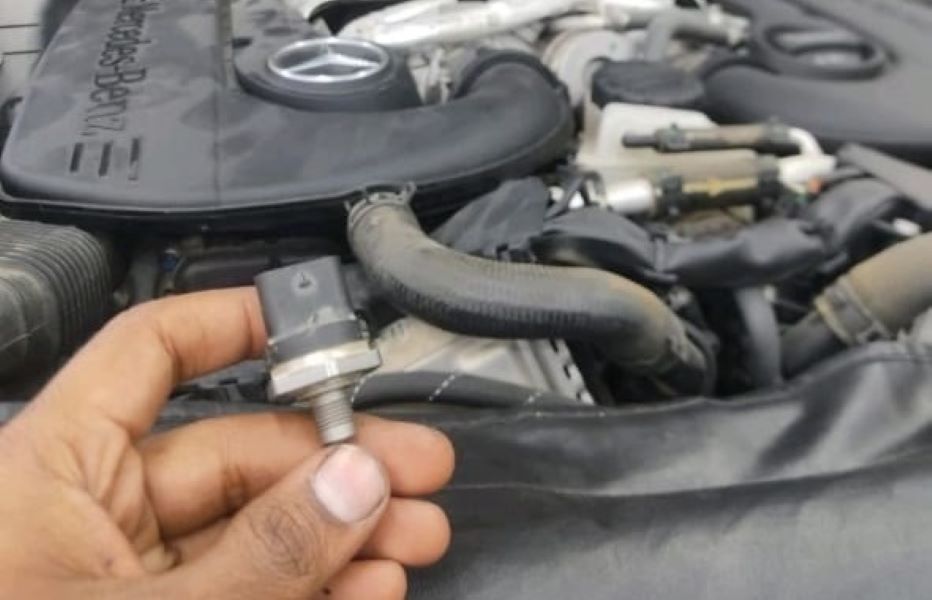Table of Contents
Limp Mode Car: Resolving a Low Power Issue in Mercedes-Benz G 500
When a luxury SUV like the Mercedes-Benz G-Class encounters sudden power loss, it can leave drivers frustrated. This article explores a Limp Mode Car issue in a Mercedes G 500 Equipped with M177 Engine, detailing how technicians diagnosed the problem using STAR diagnostics, identified the defective part, and restored the vehicle’s performance.
This step-by-step guide will help readers understand how to troubleshoot and fix similar Limp Mode Car issues.

What is Limp Mode Car?
Limp mode is a protective mechanism activated when the vehicle detects a potential issue that could harm the engine or transmission. In this state, the vehicle limits power and gear shifts to prevent further damage, allowing the driver to “limp” to a repair shop.
A Limp Mode Car often restricts speed and performance, which can be particularly challenging for vehicles like the G-Class designed for power and off-road capability.
Case Study: Limp Mode Car Issue in a Mercedes G 500
- Vehicle: Mercedes-Benz G 500
- Engine: M177 Engine
- Customer Concern: The vehicle entered limp mode, exhibiting low power and sluggish performance.
Step-by-Step Diagnosis and Solution for the Limp Mode Car Issue
1. Performing a STAR Diagnostic Scan
The first step involved connecting the vehicle to the Mercedes-Benz STAR diagnostic system to run a full scan for fault codes. This tool is essential for identifying specific issues that trigger limp mode.
- Fault Found:
The diagnostic system reported a rail pressure system fault P019017, indicating that the engine was not receiving adequate fuel pressure, which likely caused the Limp Mode Car condition.

2. Inspecting the Rail Pressure System
Since the fault was related to the rail pressure system, the team conducted a thorough inspection.
Procedure:
- Inspected the rail pressure sensor for physical damage.
- Checked for leaks or loose connections in the fuel rail.
- Tested the fuel pressure regulator to ensure it functioned properly.
Outcome:
The rail pressure sensor was identified as defective, preventing accurate fuel pressure readings and triggering the Limp Mode Car state.
3. Replacing the Rail Pressure Sensor
After identifying the defective sensor, the team replaced the faulty rail pressure sensor with a new, genuine Mercedes-Benz part.

Process:
- Disconnected the old sensor from the rail and installed the new one.
- Calibrated the sensor using STAR diagnostics to ensure proper function.

4. Checking the Fuel System
With the new sensor installed, the team conducted a final fuel system inspection to ensure there were no additional issues.
Actions Taken:
- Verified the fuel pump was operating correctly.
- Ensured the fuel lines and filters were free from blockages.
- Checked the fuel system pressure to confirm the problem was resolved.
Result:
All components were in good condition, confirming that the Limp Mode Car issue was solely due to the defective rail pressure sensor.
5. Final Test and Problem Resolution
After completing the repairs, the team reset the ECU to clear the fault codes and performed a test drive.
- Result:
The vehicle regained full power, and no further limp mode activations occurred. The customer was satisfied with the repair, and the G 500 was back to normal operation.
Key Takeaways for Fixing a Limp Mode Car Issue
- Use STAR Diagnostics:
Proper diagnostic tools are essential for pinpointing faults in Mercedes-Benz vehicles. - Inspect the Rail Pressure System:
Problems with sensors, regulators, or pressure inconsistencies in the fuel rail can trigger limp mode. - Replace Defective Components Promptly:
If a faulty sensor or component is detected, replace it with OEM parts to ensure reliability. - Reset the ECU:
After repairs, clearing fault codes ensures the vehicle exits limp mode successfully. - Conduct a Test Drive:
Always verify the repair through a road test to confirm that the issue is resolved.
How to Prevent Limp Mode Car Issues
- Regular Maintenance: Keep up with scheduled fuel system inspections and replace filters regularly.
- Monitor Dashboard Alerts: Respond promptly to Check Engine Light or other warning lights.
- Use High-Quality Fuel: Ensure you use fuel that meets the manufacturer’s standards to avoid clogging the fuel system.
Conclusion
This Limp Mode case study in the Mercedes-Benz G 500 highlights the importance of precise diagnostics and prompt repairs. The defective rail pressure sensor was the culprit, triggering limp mode and limiting the vehicle’s power. By following STAR diagnostic procedures, replacing the faulty sensor, and checking the fuel system, the issue was resolved, restoring the vehicle to full performance.
If your car enters limp mode, follow similar steps: run diagnostics, inspect fuel-related systems, replace defective parts, and reset the ECU. With proper procedures, you can quickly bring your vehicle back to life and avoid the inconvenience of a Limp Mode Car scenario.






Leave a Reply